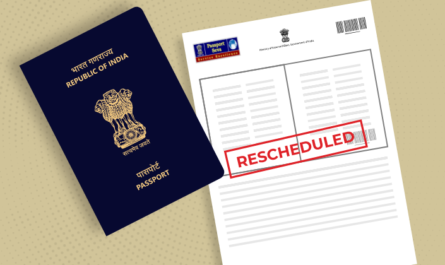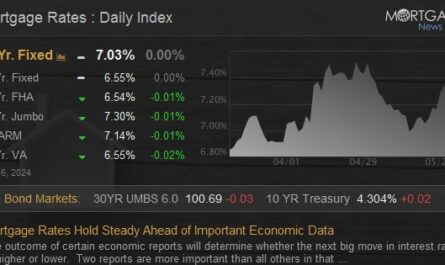In 2024, the middle class is confronting a stark reality: They cannot afford many aspects of life that were once considered attainable. The escalating costs of essential goods and services have surpassed income growth, leaving numerous middle-class families with financial challenges.
As a result, the list of things becoming increasingly out of reach for this segment of society continues to expand, forcing them to make difficult choices and sacrifices in their daily lives. Let’s explore some things that are now unaffordable for the middle class.
What Does the Middle Class Struggle With?
Here are five things that the middle class is increasingly struggling to afford in 2024:
1. Homeownership
Several sources indicate that buying a median-priced home is becoming out of reach for middle-class households in many parts of the US due to rising home prices and mortgage rates. According to Bankrate, aspiring homebuyers need a six-figure income ($110,841 annually) to afford a median-priced home of $402,343 nationally. In 22 states and Washington DC, a household income over $100,000 is required to afford a typical home comfortably.
2. Comprehensive Insurance Plans
With healthcare costs increasing, maintaining adequate and comprehensive insurance coverage for health, home, and auto is becoming a significant financial strain for the middle class. As premiums continue to escalate rapidly, many may be forced to opt for plans with limited coverage, exposing them to potential financial risks. Insurance rates have been affected by the rising price of homes and vehicles, making premiums so high that policyholders have had to carry large deductibles for affordable insurance payments.
3. New Vehicles
The cost of new vehicles has skyrocketed, making them unaffordable for many in the middle class. The average cost of a new car reached an all-time high of over $47,000 in February 2024, according to Kelley Blue Book. This increase is driven by various factors, including technological advancements, labor costs, basic model upgrades, and manufacturing costs, compounded by higher financing costs due to rising interest rates.
4. Fine Dining
As the cost of living increases, discretionary spending like fine dining takes a hit. Many in the middle class are becoming more budget-conscious, opting for more affordable dining experiences as they don’t have room in their budgets for expensive dining. The growing disparity between income growth and the rising costs of houses, certain luxury items, and experiences has made fine dining less accessible for the middle class. The middle class doesn’t have the discretionary income for fine dining in 2024 that it had four years ago.
5. Private Education for Children
With tuition rates steadily climbing, private school tuition has outpaced middle-class income, making it increasingly difficult for middle-class families to afford. This is especially concerning when considering middle-class families’ additional expenses, such as ever-rising housing costs, energy costs, and taxes, which have not left enough room in middle-class budgets to afford to send their children to a private school.
6. Childcare
Childcare expenses now consume a substantial portion of household income. According to Care.com’s 2024 Cost of Care Report, parents spend an average of 24% of their household income on childcare, with nearly half of the respondents spending more than $18,000 annually. This is significantly higher than the 7% household income deemed affordable by the US Department of Health and Human Services. For many middle-class families, this high expenditure on childcare leaves little room for other essential expenses. It’s simply unaffordable for the middle class at current costs.
What has caused this runaway cost of living to increase over the past four years?
The Widening Gap: Factors Contributing to the Middle-Class Squeeze
The growing financial challenges faced by the middle class in 2024 are not a result of a single factor but rather a combination of various economic and social forces that have been building up over time.
Stagnant wage growth is one of the most significant factors contributing to the middle-class squeeze. Despite rising living costs, wages have failed to keep pace, leaving many middle-class families struggling to maintain their standard of living.
This has been further compounded by the impact of inflation, which has eroded the purchasing power of the middle class, making it harder for them to afford essential goods and services.
Student loan debt is another significant factor, placing a substantial burden on middle-class households. As higher education costs have skyrocketed, many individuals have had to take on tremendous loans to finance their studies.
This debt has limited their ability to save and invest in their future, further exacerbating their financial challenges. Students’ ability to take on excessive student loan debt has hurt their finances. Colleges have had no incentive to lower tuition costs as most loans are government-guaranteed and can’t be bankrupted by students. Many in the middle class still have these payments, putting pressure on their finances in addition to the current cost of living.
Globalization and shifts in the job market have also contributed to the middle-class squeeze. As companies have increasingly outsourced jobs to lower-cost countries, many middle-class workers face job insecurity or struggle to find employment that offers the same level of wages and benefits as before.
Finally, the widening wealth gap between the rich and the middle class has contributed to middle-class families’ financial challenges. As the wealth of the top earners has grown much faster than that of the middle class, it has become increasingly difficult for middle-class households to keep up and maintain their financial stability.
Understanding these underlying factors is crucial in addressing the challenges the middle class faces in 2024 and developing policies and strategies to support their financial well-being, like cutting their taxes and ensuring the government stops causing runaway inflation through deficit spending, now spending a trillion every one hundred days over tax revenue.
Key Takeaways
- Middle-class families are grappling with the escalating prices of home purchasing due to soaring property values and elevated mortgage interest rates.
- Maintaining comprehensive insurance coverage for health, residence, and vehicles is becoming a financial burden for middle-income households as premiums continue to rise rapidly.
- The exorbitant cost of new automobiles, driven by technological advancements, labor costs, manufacturing expenses, increased commodity costs, and electric mandates, has made them unattainable for many middle-class consumers.
- Discretionary spending on high-end dining experiences has become less accessible for the middle class as they prioritize budgeting and affordability.
- The increasing cost of private education has surpassed middle-class income growth, making it challenging for families to provide their children with a private school education.
- Childcare expenses, including daycare, after-school programs, and summer camps, have experienced a significant surge, consuming such a substantial portion of middle-class household income that most find it unaffordable.
Conclusion
The middle class faces many financial challenges in 2024 as essential goods and services costs continue to outpace income growth. Aspiring homeowners are grappling with the need for six-figure incomes to afford median-priced homes, while comprehensive insurance plans are becoming increasingly financially burdensome.
Moreover, the exorbitant prices of new vehicles and the rising costs of fine dining, private education, and childcare are forcing middle-class families to make difficult budgetary decisions. As these trends persist, it is evident that the middle class is struggling to maintain their standard of living and afford the things they could in the past.
The rising costs of housing, healthcare, vehicles, dining, childcare, and education are making it increasingly difficult for middle-class households to maintain their standard of living. This is forcing them to make tough choices or potentially forego certain expenses altogether.
#Middle #Class #Afford



